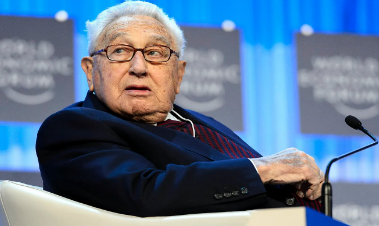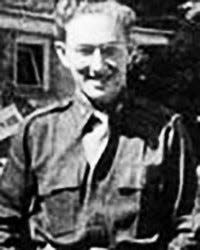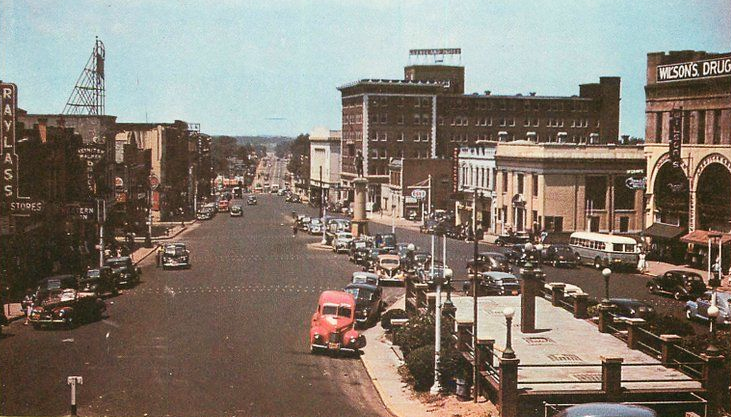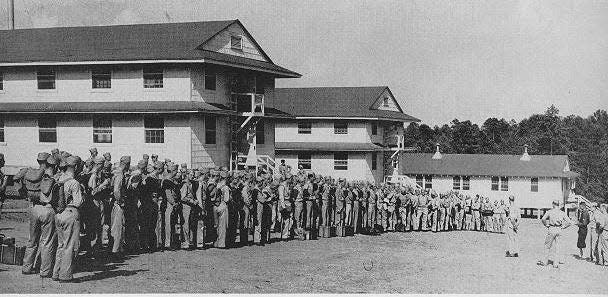Henry Kissinger trained at Camp Croft near Spartanburg during World War II
- Oops!Something went wrong.Please try again later.
Before Henry Kissinger became one of the most influential diplomats in foreign policy, he was a young soldier training at Camp Croft in Spartanburg County.
The elder statesman, who worked with President Richard Nixon to end the Vietnam War, died Wednesday, Nov. 29. He was 100 years old.
He became the most celebrated U.S. statesman in modern times, serving as secretary of state under Nixon and forming U.S. relations with China. That led to brokering the 1973 cease-fire with North Vietnam and achieving the Cold War detente with the Soviet Union.

Years before that, he escaped Nazi Germany with his family as a youth. His training at Camp Croft, a World War II Infantry Replacement Training Center, helped mold him into the statesman he became.
Born Heinz Alfred Kissinger on May 27, 1923, in the Bavarian town of Furth, Kissinger came to the United States in 1938 at age 15. In 1943, he was drafted into the U.S. Army and ended up at Camp Croft.
"Camp life was a world unto itself, with both training activities and entertainment options to keep him busy," said Brad Steinecke, assistant director of local history for Spartanburg County Public Libraries. "If he came to town, as almost all soldiers did from time to time, he might have caught a movie at one of the many theaters on Main Street, lunched at the air-conditioned Elite Restaurant, or browsed through the small collection of books at the Kennedy Library on Magnolia Street."

From 1941 until the end of the war, about 200,000 men were trained in all phases of infantry combat at Camp Croft.
That time in Spartanburg's history was one of patriotism and support for the war effort.

According to the Spartanburg County Public Libraries archive, the city of Spartanburg welcomed the camp and played host to the visiting soldiers.
There were six USO clubs in the city. Many churches opened clubrooms with opportunities for worship and entertainment. Families opened their homes, and servicemen were frequent guests to Sunday dinner, according to the archive.
"Spartanburg was a boom town during World War II, like a lot of other cities," said Phillip Stone, archivist at Wofford College. "Most of the city residents were living within a mile or two of the courthouse, so it was a dense, walkable community, with most businesses and shopping and entertainment being downtown.
"While the (Camp Croft) base had housing and some entertainment facilities, the soldiers would likely have come into town to see movies or explore, or perhaps go to church," Stone added.
Steinecke said Spartanburg had "remarkable connections" to the history of World War II.
"During the 1940s, Spartanburg had remarkable connections to the rest of the nation and even internationally, in particular through (former secretary of state) James F. Byrnes, who was at the zenith of influence during the Roosevelt and Truman administrations," Steineke said. "I think it's fascinating that there was this small overlap here of two future secretaries of state from very different eras."

After three months of training, at the age of 20, Kissinger became one of 348 soldiers naturalized on June 19, 1943, at the old post office building (now the Federal Courthouse) on Magnolia Street, according to the Herald-Journal archives.
He was among about 3,000 foreign-born soldiers who became naturalized citizens at Camp Croft, according to the archive.
The Army sent Kissinger to study engineering at Lafayette College in Pennsylvania, but the program was canceled, and Kissinger was then reassigned to the 84th Infantry Division.
Due to his fluency in German, he was assigned to the military intelligence section. During the American advance into Germany, he was reassigned to the counterintelligence corps with the rank of sergeant.
He helped track down Gestapo officers and saw combat with the division during the Battle of the Bulge. He was awarded the Bronze Star in June 1945.
Kissinger was also made commandant of the Bensheim metro CIC detachment, Bergstrasse district of Hesse, Germany, with responsibility for de-Nazification of the district.
In 1946, Kissinger was reassigned to teach at the European Command Intelligence School at Camp King, continuing to serve in this role as a civilian employee following his separation from the Army.
From 1946 to 1949, he was a captain in the Military Intelligence Reserve. He received a bachelor of arts degree at Harvard College in 1950 and a master's and doctorate degrees at Harvard University in 1952 and 1954 respectively.
Bob Montgomery covers Spartanburg County politics and growth & development. Reach him via email at bob.montgomery@shj.com.
This article originally appeared on Herald-Journal: Henry Kissinger became a US citizen while training at Camp Croft

